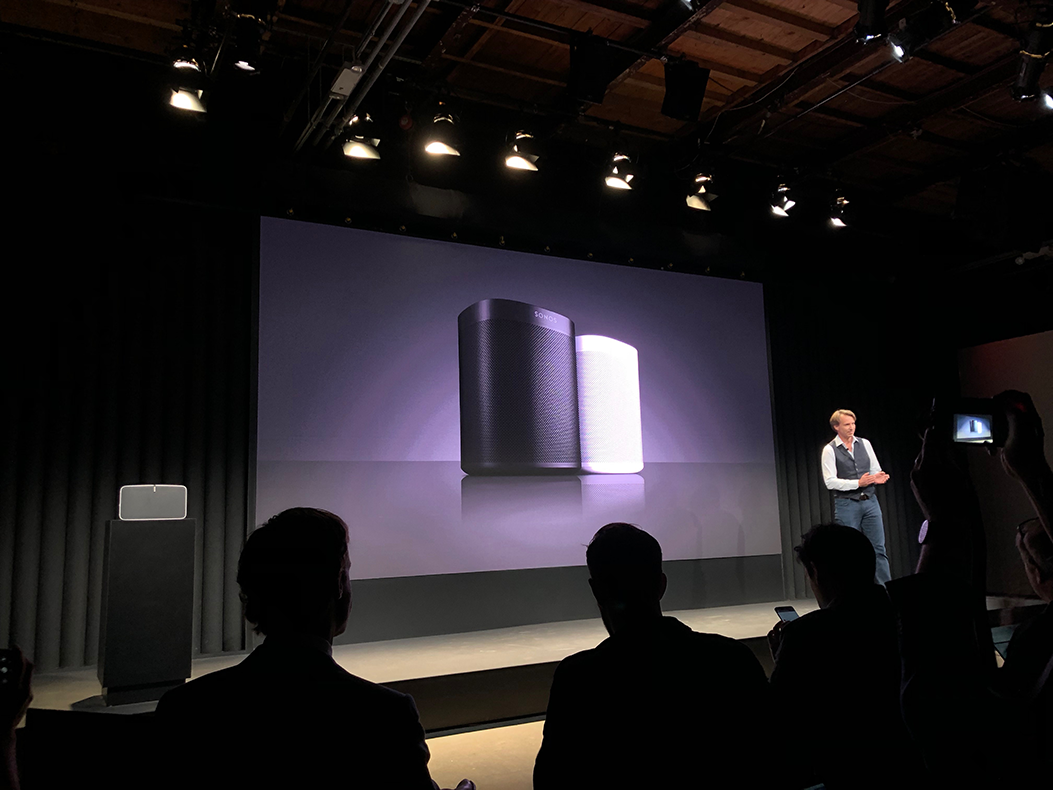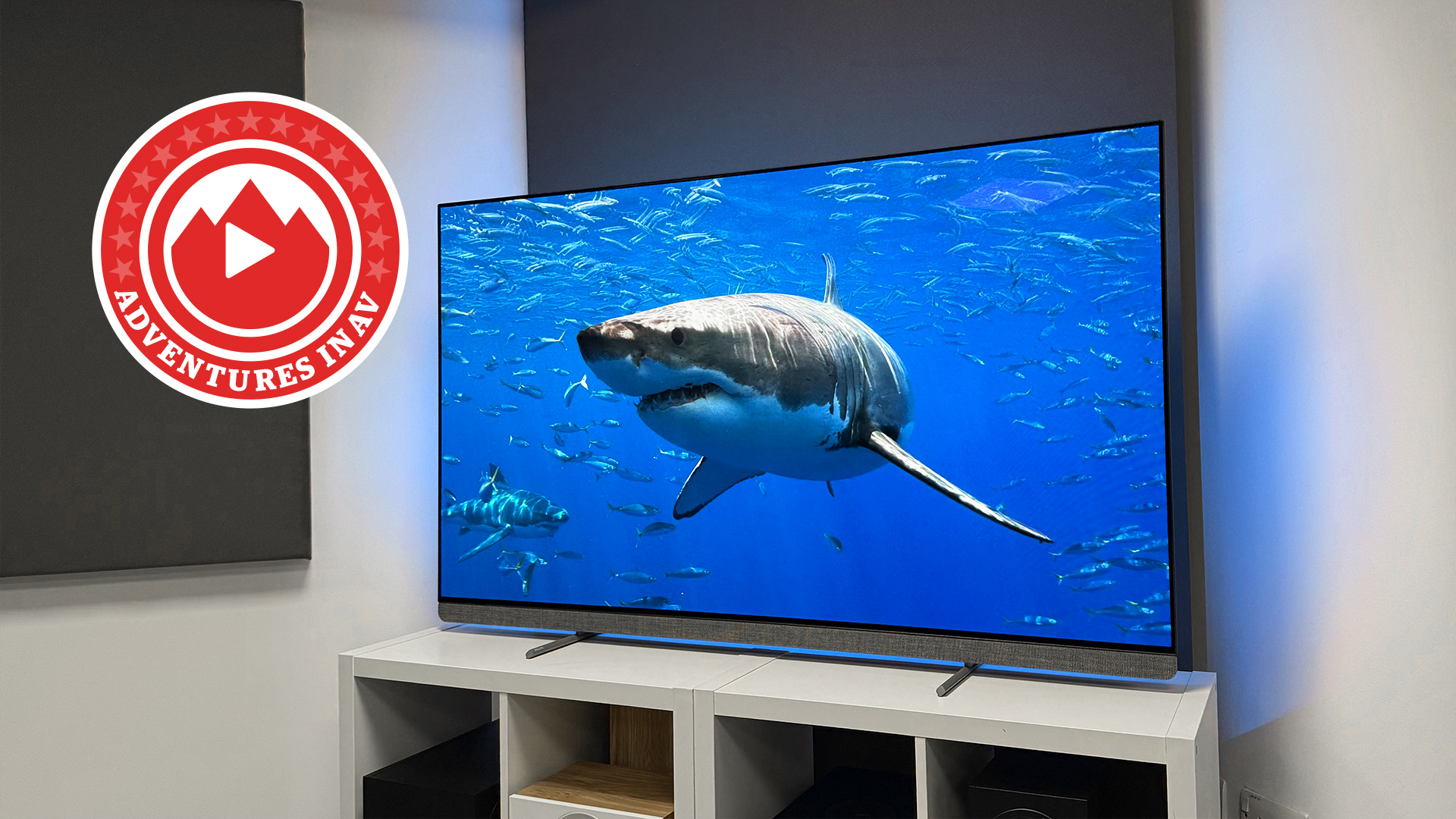
As you might have guessed from the name, the long-rumoured Sonos One is the replacement for the hugely-successful Play:1, and becomes the new entry-level speaker in the Sonos range.
It looks very similar to the existing Play:1, too, sporting the same squat, R2-D2-like shape but replacing the grey wraparound grille with an all-black or all-white finish across the whole body.
MORE: Sonos One hands-on review
On top, the three buttons of the Play:1 have been replaced by touch panels and a tiny circle of tiny, bright lights that indicate when Alexa is working. There’s also a dedicated touch button for muting the microphone to give you privacy from Alexa’s prying ears.
Of course, it’s the addition of Alexa that’s the big deal here, as it should mean that the Sonos One will combine all of the smarts of an Amazon Echo (select song with your voice, change volume, buy washing powder) with the far-superior sound quality of the Play:1. Though the recently-launched all-new Echo and Echo Plus also claim better sound than the first-gen Amazon speaker.
But it's not just Alexa - support for Google Assistant is promised in 2018, and Sonos says it will support "multiple voice services" in the future.
Sonos says the One is powered by a pair of Class-D amplifiers and features custom-built drivers, although we don’t yet know if these mean the new speaker has a different sonic signature to the outgoing Play:1.
The latest hi-fi, home cinema and tech news, reviews, buying advice and deals, direct to your inbox.
As with the Play:1 you can also partner two Sonos Ones to create a stereo pair, add a Sonos Sub, or use them in conjunction with a Playbase or Playbar to create a surround sound Sonos system.
The new Sonos speaker is wall-mountable (we’re presuming Play:1 mounts will still be compatible but are waiting on confirmation) and moisture-resistant, should you fancy putting one in your bathroom.
It’s not battery-powered, though, so the Sonos range is still without a genuinely portable speaker.
Sonos has built a custom six-microphone array with noise cancellation and something called “smart voice capture” for the One, which it says enables the speaker to hear you from right across the room, even if your music’s blaring.
If you’ve already got a Sonos system, adding the One will allow you to control music in all of your rooms using your voice, but only from the room that the One is in. You’ll essentially be sending music from the One to your other Sonos players.
But the One isn't the only way to add Alexa to a Sonos system. As hinted at previously, a standard Echo or Echo Dot can be used to control the music playing through any of your Sonos devices. Unlike with rival systems, you don't even need to specify the speaker you want to play on - just say "Alexa, play some Bowie", and it'll play on the nearest Sonos speaker. This feature will be available as a public beta imminently - probably by the time you read this.
If you do still want to go down the Sonos One route, you'll be able to pre-order from the Sonos website very shortly, with deliveries starting on 24th October. The price is £199/$199 - the same as the outgoing Play:1.
In yet more Sonos news, direct control of Tidal is due to be added to Sonos by the end of the year, and AirPlay 2 is coming to the whole range next year. There's a new, heavily updated and very swish-looking Sonos app due imminently, too.
Read more:
Sonos: everything you need to know
The world now has a choice of Sonos vinyl systems

Joe is the Content Director for What Hi-Fi? and Future’s Product Testing, having previously been the Global Editor-in-Chief of What Hi-Fi?. He has worked on What Hi-Fi? across the print magazine and website for almost 20 years, writing news, reviews and features on everything from turntables to TVs, headphones to hi-fi separates. He has covered product launch events across the world, from Apple to Technics, Sony and Samsung; reported from CES, the Bristol Show, and Munich High End for many years; and written for sites such as the BBC, Stuff and The Guardian. In his spare time, he enjoys expanding his vinyl collection and cycling (not at the same time).
